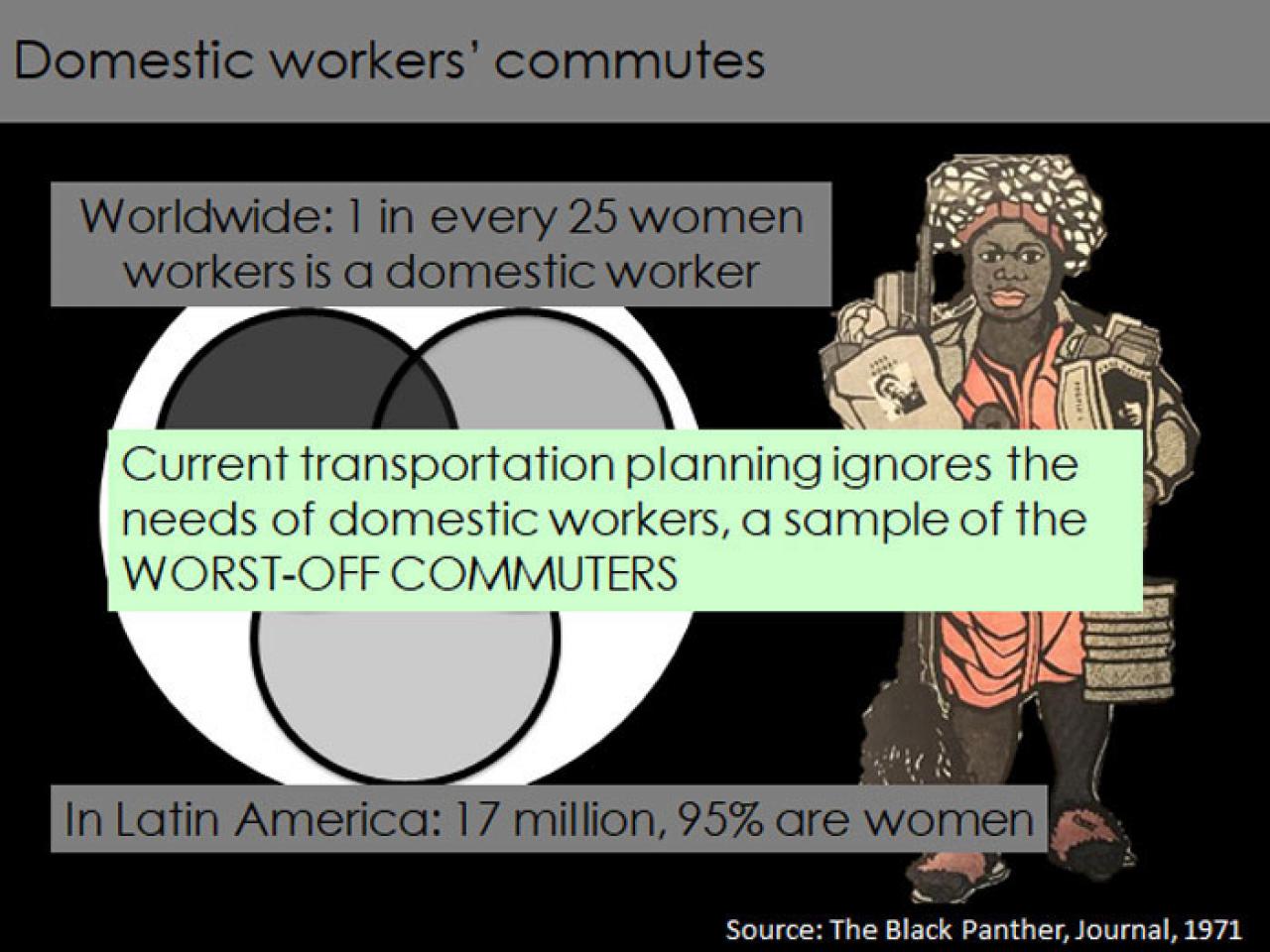
Outside of Europe research confirms that women continue to be one of the most exposed groups in mobility and transport, creating barriers in their everyday life. This can be demonstrated by the example of domestic workers in Bogotá, Medellín and São Paulo presented by Harvard Doctor of Juridical Science, Valentina Montoya Robledo.
Worldwide, 1 in every 25 women workers is employed as a domestic worker. However, current transportation planning ignores the needs of domestic workers, making them a sample of the worst-off commuters. The main reason to this is that public transport inefficiently connects high-income (where most domestic work is located) and low-income (where most domestic workers live) residential neighborhoods. Multiple bus changes and disconnected commutes make fare integration difficult, the result being a travel time of up to 6 hours per day for some women. Consequently, this needs to change in order to make the family and work life-balance manageable. Furthermore, sexual harassment is constantly present.
The study shows that there is a limited recognition by planners of especially poor women’s mobility needs for having to manage both family care and work. This, in combination with a notion of domestic workers normalizing gender-based violence and the reporting mechanism being limited and hard to access are what led to the following recommendations for future urban planning:
- Direct services between low and high-income residential neighborhoods
- Targeted time-based subsidies for trip-chaining
- Campaigns, effective reporting mechanisms and visible enforcement against gender-based violence
What would Valentina wish for future mobility development? A planning focus on the worst-off commuter. “Make domestic workers, women in the lowest income and social start an integral part of the mobility planning process. That would include everyone who faces similar challenges”.
Further reading:
- Domestic workers’ commutes in Bogotá: Transportation, gender and social exclusion (research article)
- Valentina’s gender and mobility blog (in Spanish)
